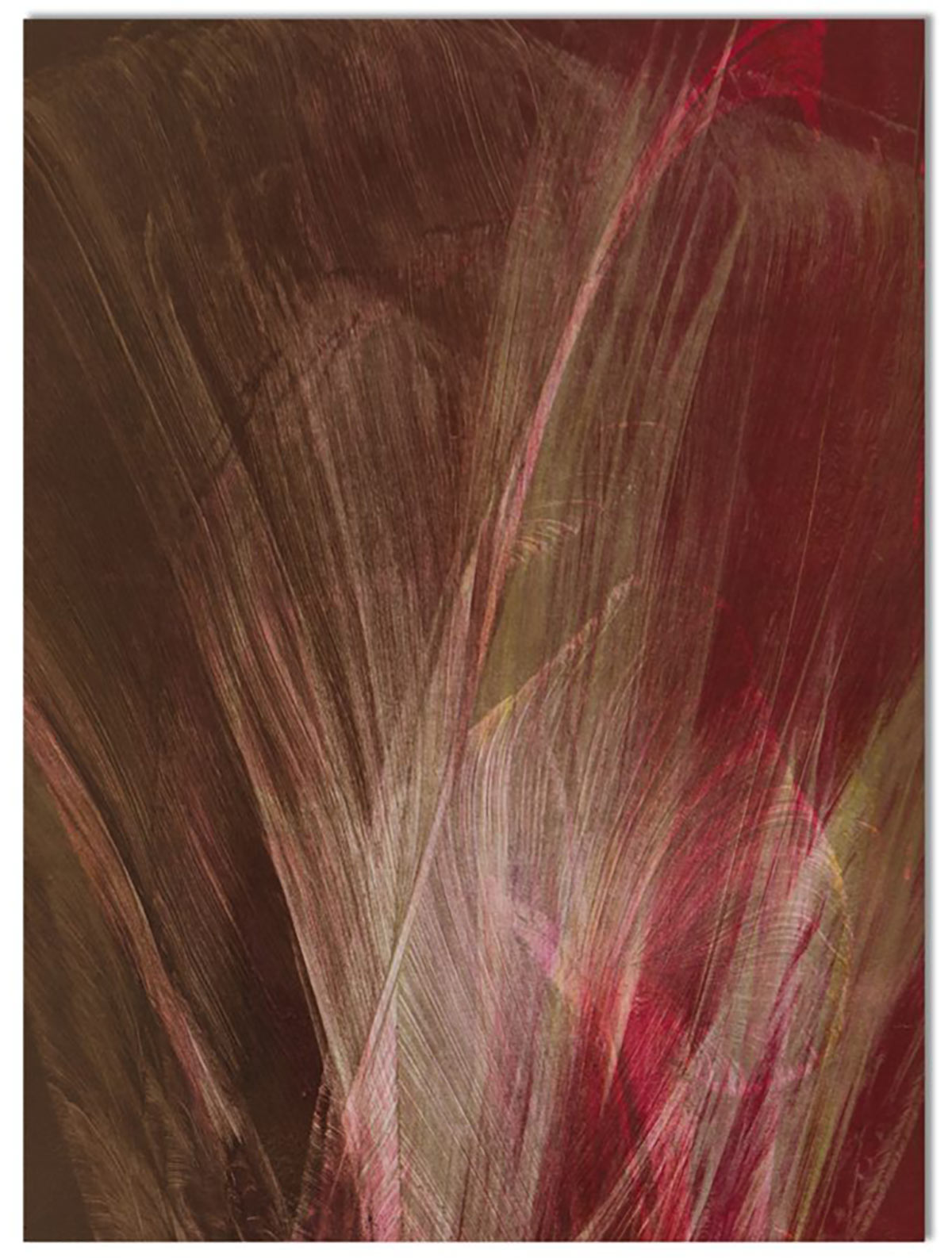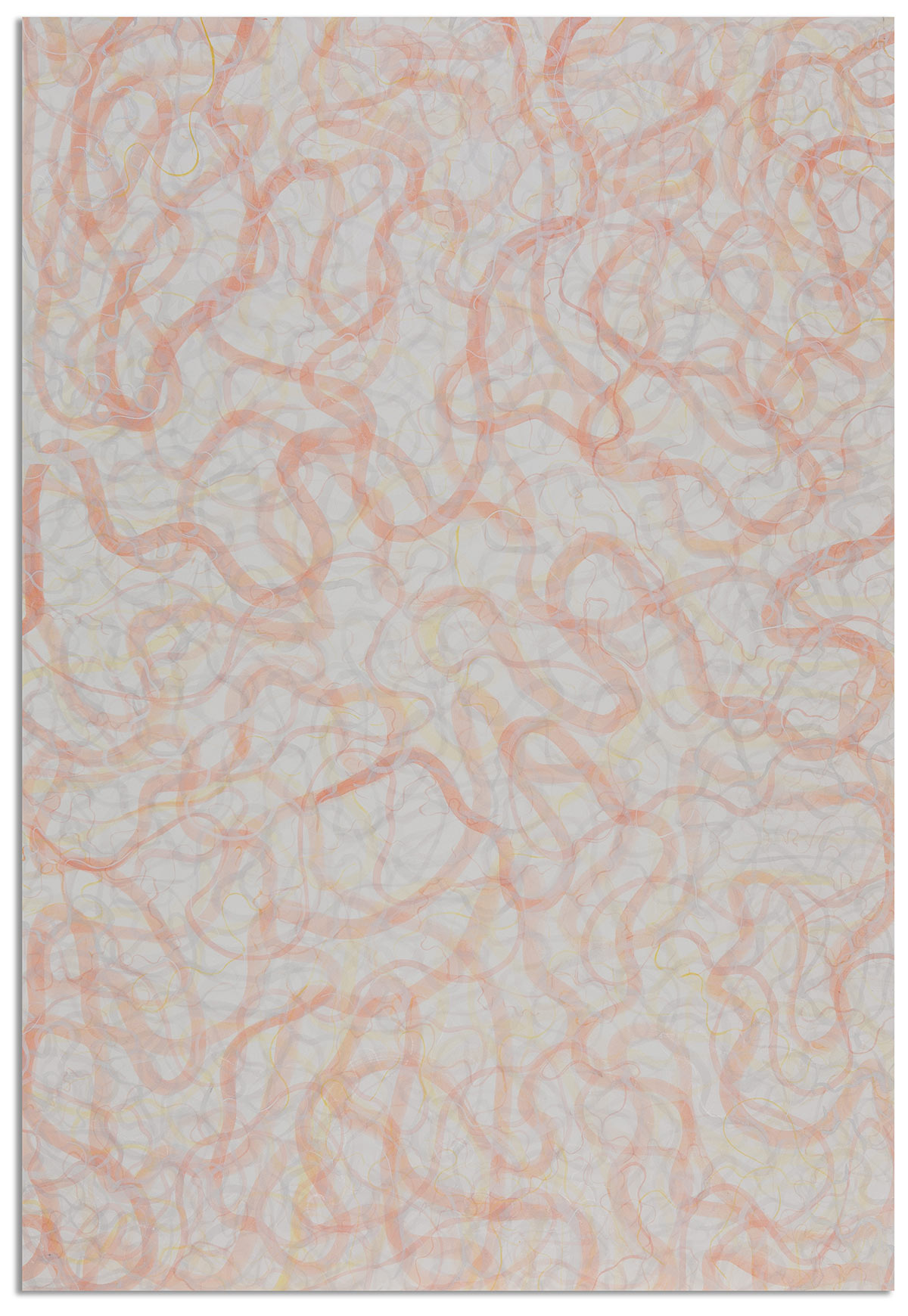Andrew Totman:
The Veiled Visceral
Thomas Middlemost penetrates The Veiled Visceral. The Wagga Wagga Art Gallery exhibition is on 3 March–27 May, with the official opening on 16 March.
March 2, 2018
In Exhibition,
Profile, Review
Andy Totman, b.1961, has taught, travelled extensively, and worked within printmaking fields since the mid-eighties; when he completed his 1983 B.A. at the University of San Diego, and 1986 M.F.A. Wichita State University. He is a prominent member of The Sydney Printmakers, managed the Mary Street Studios in St. Peters, Sydney, and has taught at the National Art School, Sydney. For the time I have known him he has worked as Head of Art and Design at TAFE NSW, and held other positions within the TAFE NSW system.
Totman worked notably in Anchorage, Alaska, The University of California, L.A., Bordeaux, France, Venezuela, Italy, and China, and is expert at all methods of printmaking, and paper making practices. Notable exhibitions of his work include the retrospective 17 December-10 February 2013 at Wagga Wagga Art Gallery, and Metamorphosis: Ever-changing… China, at the Desheng Museum, Shunde, China 9-21 July 2017.
After arriving in Australia from the U.S. in 1996 colour within Totman’s work became gradually more subdued. In 2000 his work changed from the figurative imagery he had pursued, especially after the birth of his only child, of games and toys, to a graphic, symbolic one. Multi-plate and spit-bite etching also became more prominent within his oeuvre.
In 2005/6, while travelling, and therefore working with limited printing facilities he worked more prominently in monotype. Totman made two colour, abstract, gridded, mezzotints in 2012-13. These technically challenging works provoke an illusionistic feeling of depth, a counterpoint to the free flowing explorative flat surfaces of the monotypes and gouaches in this exhibition. The current works fall neatly into two stylistic groupings discussed below:
Many of the deeply red multi-plate monotype[1] works incorporate organic forms that remind the viewer of hastily glimpsed, evanescent bones or muscle tissue encased in blood dyed veils of fugacious muslin scrim. The constant repetitious pumping beat of the Suzanne Vega song: ‘Blood Makes Noise’, echoes as foramen within bone, are displayed, paths are mapped for the eye, to travel up and down tendons. Ephemeral, heads of bones, and their smooth, intricate, and usefully organic, delicate openings are sketched out.
The differing shades and tones in the best of the works taper down towards the base of the image like a plant or the origin of a flame. The enticing flame of the campfire is captured within these works. They hold an intrinsic human allure, one of nature, of growth. The work does not explicitly depict the body, but hints at it through the red of the Pindan desert[2]. The work is the visual equivalent of rich, deep, flavored Coonawarra wine. The origins of these works are not only rooted in a depiction of the body, their rich red colour palate is linked in the Australian psyche to the Western Desert, and a nationalistic Australian landscape depiction.
Sydney Nolan’s playful, repetitive, use of printmaking, experimental frottage, and monotype could be linked with these abstract works. The elder artists numerous bird, and floral depictions incorporate similar muted, complex tones in their backgrounds. Forms found in nature appearing and evolving through the unintentional painterly discovery intrinsic to the processes of monotype.
Nolan’s imaged excursions within Australian landscape art through red earth, desert depictions, bone, and carcass, viscera and the harsh nature of our hot climate.
The second defined style of work within this exhibition is an; ‘all over’ abstract patterning, mainly in gouache: An abstract expressionist mad line, providing a flattening of the picture plane.
The tangled bush within Margret Preston’s historically important monotype Bush Track 1946, monotype at the National Gallery of Victoria, is as an interesting comparison work, along with much of the work of the Scottish painter, monotypist, and musician Alan Davie.[3] Davie had an allegiance with the all over image, and his unique work could be compared in part with these, seemingly randomly constructed, however, highly considered and finished, images.[4] The contemporary Australian artist, the late John Peart was extremely interested in all over canvasses. Pearts mid to late 1980s monotypes and paintings incorporating abstracted, all encompassing, tree forms. They are complex and balanced studies in form. Similarly the current Australian monotype artists Leah Bullen, and Annika Romeyn should also be mentioned for both completely cover oversize sheets with depictions of natural foliage, or forest imagery.
The imagery Totman confines to the rectangle of the page is reminiscent of scribbly gum textured tree patterning, the patterns of snails on sand, possible images of neurons firing, or conjoined vines. Geographically the imagery seems to hint at the form of the Murrumbidgee river[5] from Arial photographs: The divergent oxbow lakes and continuous, rambling meanders.
Nature in its most micro and macro forms is depicted: Both the quickly scored markings of microscopic creatures, and the sluggard, wanderings of earthworks; their momentous systemic changes.
The excessive number of almost hysterically reproduced swirls, and snakelike kick-backs are detailed, complex in tone, layered, and colliding, to form rich all over patterns. The works are interesting, alluring, beautiful, in their detail and they continue a dialog with international abstract expressionist artists.
Dr. Thomas A. Middlemost
Art Curator CSU Art Collection
[1] The monotype, the most painterly of printmaking mediums, is a unique painted or inked impression transferred from an unicised and unregistered matrix.
[2] Melbourne printmaker Deborah Williams made monoprint, etching, collographs in two colours in 2005/6 incorporating the red earth of the Australian Pindan desert, the south western Kimberley region in Western Australia around Broome including the Dampier Peninsula region, and its hinterland.
[3] Davie was interested in Eugen Herrigel’s, Zen and the art of archery, Pantheon Books, New York, N.Y., 1953. Initially published in Germany in 1948 and translated to English in 1953; which, like its currently more popular Robert M. Pirsig, Zen and the art of motorcycle maintenance, William Morrow & Co., Scranton, Penn., 1974, advocates the practice of performing simple motor tasks repetitively for many years to make that activity unconsciously effortless both physically and mentally. In his book Herrigal states (p. 10): “If one really wishes to be master of an art, technical knowledge of it is not enough. One has to transcend technique so that the art becomes an “artless art” growing out of the Unconscious.” Monotype was one of the methods that Davie advocated for this spontaneous and unconscious process.
[4] Grishin, S., The Art of Grahame King, Book Chapter: Grahame King The Patron Saint of Australian Printmaking, 2005, p.41-58. [Davie artistically influenced the, “patron saint of Australian printmaking” Grahame and Inge King; all making monotypes at The Abbey Art Centre Barnet, New Heartfordshire.]
[5] The Murrumbidgee River is a major tributary of the Murray River within the Murray–Darling basin and the second longest river in Australia. It flows through the Australian state of New South Wales and the Australian Capital Territory. The river is 1609km long and is the lifeblood of Wagga Wagga.






